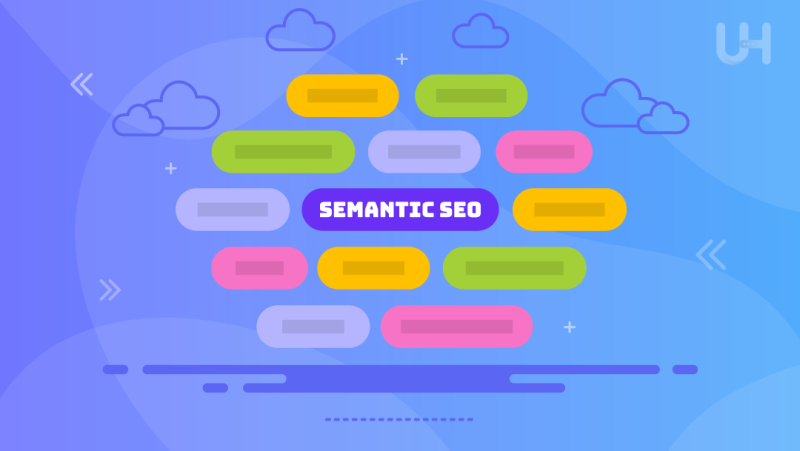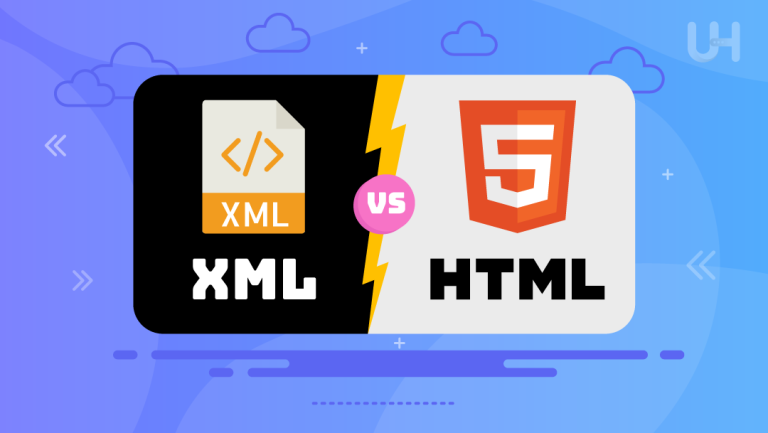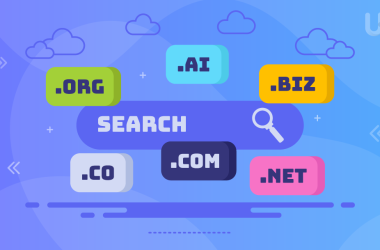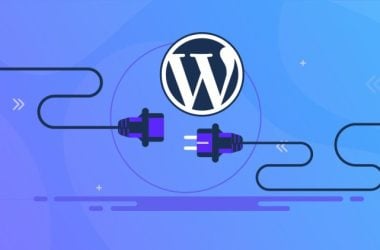Semantic SEO is an advanced approach to optimizing web content that focuses on understanding and catering to user intent, context, and the relationships between concepts. As search engines have evolved, so too have the strategies for improving online visibility, moving beyond traditional keyword-based tactics to a more nuanced understanding of language and meaning. By prioritizing the relevance and context of content, Semantic SEO enhances user experience and engagement, making it essential for businesses looking to thrive in today’s digital landscape.
In this blog, we will explore the fundamental concepts of Semantic SEO, its importance, key components, and effective strategies for implementation.
Overview of SEO
Search Engine Optimization SEO makes a website more visible on search engines like Google and Bing. The technique involves the optimization of content, structure, and HTML to rank higher in searches. Traditional SEO focused on keyword density and backlinks, leading to keyword stuffing. Today, most search engines favor user experience and context. Major updates such as Panda and Penguin by Google indexing made it increasingly focus on quality content and user intent. Modern SEO has consolidated into technical SEO, on-page optimization, and off-page SEO tactics. It drives organic traffic, heightens branding awareness, and develops credibility with proper SEO. An established SEO strategy helps grow conversion and not hesitate to attract customers for businesses of every size.
Semantic SEO differs from headless SEO because it’s an advanced strategy used in the optimization of content. It is focused on meaning and context as far as phrases are concerned, that the users use while searching. It tries to find out exactly what the user intends to seek and explore the connections of concepts rather than relying mainly on keywords and backlinks. Techniques like structured data, topic clusters, and contextual content creation improve search visibility and user engagement.
What is Semantic SEO?
Semantic SEO is an advanced optimization technique focused on understanding the meaning and context behind user searches. Instead of just using keywords, it looks at how related concepts are linked and the intent behind the query. This approach helps websites create more relevant, semantic content. Techniques like structured data, schema markup, and content organization play a key role in Semantic SEO, aligning with how people naturally search for information. You can increase your WordPress website speed with Ultahost’s High-Speed WordPress Hosting plans.
Semantic SEO makes web content more relevant and contextual as it takes into consideration user intent and relationships between related topics. Rather than keyword targeting per se, this approach asks content developers to consider the topic and all the ways users might voice their queries. Coverage of related questions and concepts makes content more likely to answer user needs. This would result in better ranking in the search engines and better engagement of users as the search engine can interpret better what information serves a purpose for the user. Semantic SEO, therefore, helps create a meaningful relationship with the user and content leading to greater satisfaction and loyalty.
Key Concepts in Semantic SEO
Semantic SEO focuses on understanding the meaning and context of user queries, utilizing semantics to enhance content relevance. Search engine algorithms have evolved to interpret these nuances, improving how results are delivered based on user intent and relationships between concepts. Schema markup allows search engines to correctly understand the content on the website. With this context’s help, the content you host on your managed hosting WordPress site can ensure that it appears for the most relevant queries.
Semantics and Language
Semantics is the branch of linguistics concerned with meaning in language. It looks at the words, phrases, and sentences regarding how they carry meaning. In the sense of Semantic SEO, semantics is significant for this understanding of the user’s query. It helps in determining the intent behind the search. For example, “jaguar” might be referring to the animal or the car brand. And hence, if search engines can understand the context, they can return relevant results.
However, the role of semantics in SEO cannot be underemphasized. Semantics ensures that content creators create content according to the needs of the user so that it is aligned with intent. Thus, better alignment of the content with the intent of the user leads to better search relevance. This focus on semantic relationships, which incorporates synonyms and related concepts, can help a website answer a wider range of queries for a user, ultimately increasing visibility and user satisfaction.
Search Engine Algorithms
Search engine algorithms are sophisticated systems that process and interpret every search query. They judge various elements on which to base the displaying of results. Present-day algorithms use natural language processing, or NLP to help more easily see meaning and context. They do not focus solely on the keywords, but on how each word inter-relates. For example, an algorithm might recognize that “buy shoes” and “purchase footwear” are equivalent, though they use different terms.
These algorithms keep changing. They learn the behavior patterns of the users and technological advancements. Through all these improvements, they have bettered their understanding of contextual behavior. This way, search results are more in context to a user’s query, which is more relevant to his intent. Semantic SEO shares the philosophy with these algorithms as it emphasizes relevance and quality. A website that uses Semantic SEO will have a bigger chance of ranking higher on search engines.
The Evolution of SEO
The evolution of SEO reflects a significant shift in how search engines operate. In the early days, SEO primarily revolved around keyword optimization. Marketers focused on incorporating specific keywords to rank higher in search results. However, this approach often led to low-quality content and poor user experience.
As search engines evolved, they began to prioritize user intent and content quality. Major algorithm updates, such as Google’s Panda and Hummingbird, marked this transition. Panda targeted low-quality content and emphasized the importance of providing valuable information. Hummingbird introduced semantic search capabilities, allowing algorithms to understand context and meaning more effectively.
This historical shift has led to a more nuanced understanding of language and intent in SEO. Today, Semantic SEO is essential for businesses aiming to improve their online visibility. By focusing on user needs and the relationships between concepts, marketers can create high-quality content that resonates with their audience. This evolution underscores the importance of adapting to changes in search engine technology and user behavior.
Master SEO with Ultahost’s SEO VPS!
Master the art of SEO with Ultahost’s SEO VPS solutions! Boost your website’s online presence to get in the highest search engine rankings. Start today to explore Ultra Fast Speeds and Pre Configured Setups for your website!
The Importance of Semantic SEO
Semantic SEO improves understanding of user intent by aligning content with informational, navigational, and transactional needs. It enhances search result relevance and leverages advanced algorithms to boost accuracy and user engagement. By offering structured content, it meets users’ expectations and improves their overall experience.
Understanding User Intent
It is what a search query serves to pursue. For this reason, it represents a crucial area of understanding for content creators to optimize their content properly. There are three primary forms of user intent: informational, navigational, and transactional. Semantic SEO correlates the content with these various intents, making the company’s content more relevant to users’ requirements and delivering their needs accurately. This way, businesses can provide more relevant search results, which will increase the likelihood of engagement and possible conversion.
Enhanced Search Engine Algorithms
Improvements in search algorithms interpret a search query much better in various search engines. Natural language processing and machine learning techniques improve the ability of algorithms to understand context and meaning. Such advances enable search engine rankings to consider synonyms, related concepts, and patterns of user behavior. For this reason, the relevance of search results becomes that much stronger about users’ needs. In a nutshell, semantic SEO takes advantage of sophisticated algorithms by hierarchically organizing information in a manner that reflects how algorithms decode words and intent, hence enhancing search visibility.
Improves User Experience
Semantic SEO further promotes engagement as well as user satisfaction in a well-crafted way. Thus, semantic SEO provides content that would potentially answer users’ queries so that it establishes a more meaningful communication with the site. The well-structured semantic approach prevents high bounce rates; because users are likely to find what they are looking for and, therefore, spend more time on the website. Optimized dwell time signals search engines that the content is of value. Clear headings, organized information, and suggested content relate to each other; therefore, users can navigate a website. The structured approach is more effective with navigation and therefore enhances comprehension of content for a better user experience overall.
Key Components of Semantic SEO
Key components of Semantic SEO include structured data and schema markup, which help search engines better interpret content. Topic clusters and pillar content establish authority by covering subjects comprehensively. Contextual content creation, user-generated content, and natural language processing further enhance relevance. These strategies align content with user intent and improve engagement.
Structured Data
Structured data is how information on a website is categorized to be easy to understand by search engines. There is structured data, usually presented in schema markup, which standardizes a format; this in turn provides further context to come up with a clearer understanding of the content so search engines become more viable in deciphering and presenting the information that is found on search results.
Schema Markup
Schema markup is structured data that works to understand the context for search engines regarding the content on a webpage. The various schema markups are “article,” “product,” “review,” etc. For instance, price, availability, and rating can comprise the schema used in a product page. Schema markup in HTML is adding unique tags to the code of your website so that search engines can recognize and use the structured data. Since this exposure will more likely cause a user to click a result that clearly has more information context at a glance, this can hugely improve click-through rates (CTR). Higher CTR may lead to more traffic, which is always good for the SEO performance of a website.
Topic Clusters and Pillar Content
Topic clusters are a content model that gathers related pieces of content around a central theme or “pillar.” It improves SEO by developing a network of interlinked articles that cover a series of subtopics related to a general subject. Topic clusters allow search engines to understand the depth and breadth of your content, thus increasing the authority and relevance of your site.
Pillar pages essentially are centerpieces for a particular topic, providing all the information a user might need about the topic. These pages support your authority by deeply covering the topic and pointing to other related cluster content. An ideal pillar page should be able to provide deep, well-researched content that answers key questions and links to related, more specific articles. This will help improve usability and your site ranking for relevant search queries.
Contextual Content Generation
To deploy semantic SEO, one has to understand the imperative meaning of contextual and user-intent-based writing. This is about knowing what the users want, what problems they are trying to solve, and what kind of content will best meet their needs. Techniques like keyword research tool, analysis of user behavior, and understanding of search intent can help create content that will align with user goals.
Identifying and answering related questions is an important strategy in Semantic SEO. AnswerThePublic is a useful tool for finding common user questions related to your topic. Google’s “People Also Ask” feature offers additional insights. Addressing these questions in your content helps meet user needs and increases the chances of ranking for a wider range of queries.
User-Generated Content
Reviews, comments, and forum discussions made by users can greatly contribute to building up SEO. They increase engagements and provide more context to search engines to indicate relevance and even authority. With that in mind, you can promote user engagement with the help of user-generated content on your website or product pages. This can be done by creating reviews and also engaging in discussions that bring precious insights to your content.
Natural Language Processing (NLP)
NLP is the technology applied by search engines to understand a little better what the user intends by a query. It helps develop a natural language process whereby search engines would interpret words about their context, sentiment, and relationship between them. In plain words, this translates to content creators and marketers writing in natural user behavior and intent. By organizing your content to directly answer questions, the NLP-driven algorithms will identify with that, and your content will be more likely to surface for relevant terms of the question.
Semantic SEO Strategy

Semantic SEO include structured data and schema markup, which help organize content for better search engine interpretation, as well as topic clusters and pillar content that establish authority through interconnected, comprehensive coverage of relevant subjects. Additionally, contextual content creation, user-generated content, and natural language processing enhance relevance and improve user experience by aligning content with user intent and facilitating better engagement.
Keyword Research for Semantic SEO
Semantic SEO Keyword Research Keyword research for Semantic SEO is finding keywords based on what the user intends and ensuring relevance in context. Techniques range from focusing on long-tail keywords, user queries, related terms that indicate higher intent, and many more. Tools like Google Keyword Planner, Ahrefs, and SEMrush among others will be used to find those keywords so that the right information matches up with what users want.
Content Planning and Creation
This is to keep the content calendar in order and enable planning as well as organization of content around key topics. It thus means maintaining consistency in publishing and allows for strategic coverage of various aspects of a subject over time. This approach enhances relevance and authority while keeping user engagement at bay.
Nature keyword integration must be followed to keep the content clear and readable. Avoid keyword stuffing and use keywords in as many headings and subheadings as across the content. This maintains readability while letting the search engines in on the relevance signal.
Implementation of Structured Data
Structured data helps search engines understand website content more effectively. By adding schema markup to HTML, you can enhance visibility in search results and qualify for rich snippets.
- Step-by-Step Guide: To implement structured data, start by selecting the appropriate schema type for your content (e.g., article, product, review). Then, add schema markup in JSON-LD format to the HTML of your webpage. Use Google’s Structured Data Markup Helper to simplify this process. Avoid common pitfalls such as incorrect formatting or selecting the wrong schema type.
- Testing Structured Data: After implementing schema markup, it’s important to validate it using Google’s Structured Data Testing Tool. This tool helps ensure that your structured data is correctly formatted and recognized by search engines, improving your content’s chances of appearing in rich search results.
Continuous Optimization
Continuous optimization involves regularly tracking SEO performance using tools like Google Analytics and updating content to maintain relevance, improve rankings, and meet evolving search trends.
- Monitoring and Analytics: Monitoring the performance of your Semantic SEO strategy is essential for continuous improvement. Use tools like Google Analytics and Google Search Console to track key metrics such as organic traffic, keyword rankings, and user behavior. These insights help refine your approach and improve search visibility.
- Regular Content Updates: Search engines favor fresh and updated content, so regularly reviewing and updating your material is critical. Repurpose older content by adding new information, optimizing for new keywords, or refreshing the structure to align with current SEO practices. This keeps your content relevant and competitive in search rankings.
Boost your Website’s Visibility with Semantic SEO
Optimize your content and improve rankings with advanced hosting solutions. Check out UltaHost’s VDS Hosting for reliable performance and seamless SEO integration!
HTML Semantic SEO
HTML semantic elements like <header>, <article>, and <section> provide structure and meaning to web content, improving SEO by helping search engines better understand page organization. These tags also enhance accessibility, making websites more navigable for users with disabilities while supporting better search rankings.
Understanding HTML Semantic Elements
Semantic HTML applies HTML tags that are meaningful and structural to users and search engines. Some of the semantic HTML tags include <header>, <footer>, <article>, <section>, <nav>, and <aside>. These will help the search engine to understand the content hierarchy as well as its purpose better. Semantic elements enhance SEO for search engines to index the content more vividly and enhance user experience through clear organization.
Accessibility and SEO
Semantic HTML is essential to improve website accessibility for persons with disabilities. Screen readers and assistive technologies rely on well-structured semantic HTML to navigate and understand a webpage. Following accessibility standards like WCAG makes your site more user-friendly for everyone. This also benefits SEO, as search engines favor sites with better user experience, including accessibility, which can improve rankings.
Best Practices for Semantic HTML
Semantic HTML should be used with a logical and clear structure in your content. Relevant and descriptive tags will be chosen concerning the actual content they enclose. For example, articles for stand-alone content, and <section> when your content can be grouped. Generic tags such as <div> should never be used when a semantic tag can accomplish the same job.
Best Practices for Using SEO Tools
To effectively use SEO tools for Semantic SEO, it’s important to align the tools with your overall SEO goals and strategy. Here are key strategies to follow:
- Define Clear Objectives: Before using any tool, define your goals. Such as improving search rankings, increasing user engagement, or optimizing structured data. Knowing what you want to achieve will help you use tools more effectively.
- Keyword Research and Optimization: Use tools like Moz or SEMrush to discover semantically related keywords, long-tail keywords, and phrases that align with user intent. These tools offer insights into the relevance and search volume of different keywords, allowing you to prioritize terms that reflect the context behind search queries.
- Content Audits: Use tools like Screaming Frog to conduct content audits and identify opportunities for improving the relevance and structure of existing content.
- Structured Data Implementation: Utilize Schema.org or Yoast SEO to implement and test structured data. These tools help you add schema markup to your content, improving how search engines interpret your site’s data. Schema markup helps content appear in rich snippets, improving click-through rates and search visibility.
- Monitor Performance and Adapt: Continuously track your site’s SEO performance using Google Analytics and Google Search Console. Monitor key metrics such as organic traffic, click-through rates, bounce rates, and keyword rankings. Regular analysis helps you adjust your strategy and adapt to changing search engine algorithms or user behavior trends.
Tips for Combining Multiple Tools to Maximize SEO Impact
Leveraging multiple SEO tools can provide more comprehensive insights and optimize your SEO strategy. Here are tips for combining tools effectively:
- Use a Keyword Research Combination: Combine keyword research tools like Google Keyword Planner for search volume and competition, and AnswerThePublic for related questions users ask. This dual approach ensures that your content addresses both high-ranking and semantically relevant queries.
- Pair Content Audits with Content Creation: Tools like SEMrush or Ahrefs can highlight gaps in your content where users’ intent isn’t met, while tools like Clearscope or MarketMuse help you optimize content creation with semantic relevance in mind. Combining both helps align your content with the latest SEO trends while improving content depth and structure.
- Enhance Structured Data Implementation with Validation Tools: After using Schema.org or Yoast SEO to add schema markup, use Google’s Structured Data Testing Tool or Rich Results Test to ensure the markup is correctly implemented. This combination ensures that your content is well-structured and optimized for rich snippets, improving search visibility.
- Combine Analytics Tools for Deep Insights: Use Google Analytics for user behavior insights, such as bounce rates and session duration, and Google Search Console for technical SEO data like indexing status and search traffic. Together, these tools offer a full picture of both user interaction and technical site performance.
By using a mix of tools, you can cover all aspects of SEO, from keyword research to content optimization, structured data implementation, and performance tracking, ultimately maximizing the effectiveness of your Semantic SEO strategy.
Conclusion
Semantic SEO plays a crucial role in the modern digital landscape by enhancing search relevance, user engagement, and accessibility. By focusing on user intent, structured data, and context-driven content, businesses can significantly improve their visibility and authority in search results. Semantic SEO tools and strategies help optimize content for both search engines and users, providing long-term benefits in the competitive digital marketing environment.
Semantic SEO is the future of search optimization, helping you stay ahead by aligning content with user intent and search engine expectations. To fully optimize your website’s performance and SEO strategy, consider UltaHost’s virtual private server hosting for powerful, flexible hosting solutions.
FAQ
What is Semantic SEO?
Semantic SEO is an advanced approach to optimizing web content that focuses on context, meaning, and user intent rather than just targeting specific keywords.
How does Semantic SEO differ from traditional SEO?
Unlike traditional SEO, which primarily targets keywords, Semantic SEO emphasizes understanding the context and relevance of content to improve user engagement and search visibility.
What are the key components of a Semantic SEO strategy?
A Semantic SEO strategy includes structured data implementation, user intent-focused keyword research, content organization through topic clusters, and the use of semantic HTML elements.
Why is user intent important in Semantic SEO?
User intent is crucial in Semantic SEO as it helps create content that meets users’ needs, leading to higher engagement, better user experience, and improved search rankings.
What tools can help with Semantic SEO?
Tools like Yoast SEO, Moz, and Schema.org are essential for implementing Semantic SEO, optimizing content, conducting keyword research, and effectively applying structured data.
How can structured data improve Semantic SEO?
Structured data enhances Semantic SEO by providing search engines with clear information about content, helping to improve visibility and the chances of appearing in rich snippets.
How does Semantic SEO affect user experience?
Semantic SEO improves user experience by ensuring content is relevant, easily navigable, and tailored to meet user intent, leading to higher engagement and lower bounce rates.










